Allow me to get all Kevin Cameron on you for a second and make an aircraft-engineering analogy. By 1945 or so, piston-engine aircraft had reached a high point in development, bumping up to the 500-mph mark in level flight. The fabulously expensive and complex powerplants—which could make more than 2500 horsepower—did it with all the stuff any gas-burning gearhead will recognize: fuel-injection, supercharging and advanced metallurgy. But even though piston-engine planes did make slight gains (a modified WWII-era F8F Bearcat fighter plane set the level-flight record in 1989: 528 mph), the piston-engine airplane, c. 1945, was about as good as it would ever get, despite almost every single aeronautical engineer on the planet trying to make it better.
You can see where this is going, can’t you? At some point, between 1995 and 2005, piston-engined sportbikes may very well have hit their high point, despite many millions of dollars of development since. Sure, 2013’s crop of superbikes is faster, lighter, and easier to ride, but by how much? And how useable—and cost-effective—are those gains? If you spend $15,000 on a sexy new BMW S1000RR, will you get three times the enjoyment (or speed) as you would from a 2005 GSX-R1000? A quick troll of Craigslist shows a nice variety of bargain-priced 10-year-old motorcycles that can go around a racetrack—or up and down your favorite patch of twisties—as fast as anything in new-bike showrooms today in the right hands. Traction control? Anti-lock brakes? Switchable engine mapping? Who decided we needed those features, anyway? Back in the day, to avoid high-sides, low-sides and skidding, you had to actually know how to ride.
There is a lot of 10-year-old stuff in the $4-5000 range, but what is the best value for those seeking an expert-level sportbike for trackday or street duty? I decided to make the cutoff between the first-generation Yamaha YZF-R1 — a ground-breaking machine—and the 2005 GSX-R1000, the last really hairy-chested open-class ride without electronic riding aids. Much like the final years of fighter aircraft development during the Second World War, those were the years when it seemed like the last barriers to ultimate performance crumbled one by one, as dry weight dipped below 400 pounds and rear-wheel horsepower soared past 130. Seriously, if you want lighter and faster than a 2004 ZX-10R you should consider launching yourself into space with a giant catapult. Outside a World Superbike paddock those kinds of numbers were unimaginable just 10 years earlier. And now you can get them for less than the price of a crappy used Honda Accord. Good times—but hard choices.
So I went to my local online forum, the Bay Area Rider’s Forum and put it to a vote. Surprisingly, the mega-powered bikes like the R1, GSX-R1000 and ZX-10R didn’t make the final cut—Bay Area riders actually ride, and value handling, reliability and character over sheer brawn. Here are the three bikes that garnered the most votes.
2000-2003 Honda CBR929RR: Third in our hearts, first in our minds.
Honda is a bad company to piss off. There’s a legendary story of Yamaha’s CEO literally crawling into Soichiro’s office in the mid-’80s, begging him to call off the price war between the two companies that was flooding the USA’s showrooms with cheap product. That glut preceded a slump in motorcycle sales through the early 1990s that started to lift when the Japanese got back to what they did best: building bikes with mind-blowing performance-per-dollar. Honda introduced the CBR900RR in 1993, which prompted Yamaha to respond with the YZF-R1, that sleek, sexy missile of a sportbike. Big Red poured on the R&D dollars and moved up its development cycle two years to fire back with the 929, just months before the end of the 20th Century.
Honda hoped the CBR929RR was the ultimate superbike. It was lighter and almost as powerful as the R1, weighing in at about 435 pounds and making low 120s at the back wheel. The price was reasonable, at a buck under $10,000, and of course…it’s a Honda, which is enough for a lot of buyers.
If it isn’t, there is tech galore. Fuel-injection, motor as stressed-member, catalyzed exhaust, flapper valve to eliminate tuning flat spots, 43mm inverted cartridge forks, Pro-Link rear suspension…all packed into a very compact chassis that, in hallowed Honda fashion, is still comfy enough for long rides. Adding to that convenience is a huge 6-liter locking compartment under the flip-up passenger seat—remember when you could put stuff inside your bike? That big, bulbous tailsection is starting to look pretty good, eh?
Sadly for Honda, the 929 was never a huge hit, not even with the cultists. It was overshadowed by not only the genuine 150-plus horsepower GSX-R1000, but Honda’s own RC-51 Twin. That prompted Honda to introduce the 954 in 2002, which shaved a few pounds and added a few ponies, but it was too little, too late, and by 2004 the winged folk had introduced the CBR1000RR anyway.
Still, more than 10 years on, the 929/954 is a very good motorcycle. Not only is it durable, dependable, well-built and exciting to ride, it’s also cheap. Cheap as in undervalued, with numerous clean examples (they seem to get abused less than other sportbikes of the era) under $4000. Aftermarket support is still good, and a quick call to the service department at SF Moto in San Francisco revealed that even in the tough environment of San Francisco’s salty air, bumpy streets and stop-and-go traffic conditions, the bikes are pretty reliable, with no recurring issues other than the dreaded regulator-rectifier failure, a common issue for motorcycles of that era. In fact, we can safely say that all three of the bikes in this story wear out regulator/rectifiers with the regularity of clutch plates.
Looking for a durable, comfortable, dependable ride that can still wheelie in the first four gears and do a track day when you need to? The 929 and 954 make “a great vanilla sportbike choice,” according to one owner.
YEARS BUILT: 2000-2001 (929) 2002-2003(954)
KBB RETAIL VALUE: $3495-$4655
MAD MEN SEXY-SCALE RATING: Peggy Olsen without support garments, or Roger Sterling pre-midafternoon vodka
2000-2005 Suzuki GSX-R750: Racer’s Choice
The GSX-R series is the AK-47 of club roadracing. Cheap, dependable, durable, tough, and of course, very effective in the right hands. So it’s a great choice for anybody looking for a fast, good-handling, reliable and affordable streetbike as well.
But which GSX-R? Like the AK-47, the basic design is configurable, predictable for a parts-bin engineering outfit like Suzuki. Within any generation of GSX-Rs, (the one we’re concerned with debuted in 2000 and ended in 2004), the motors, frames, suspension and bodywork could be swapped around without too much trouble, making finding used and aftermarket parts easy for racers and budget-minded street riders.
Still, it doesn’t take a genius to figure out that the Goldilockian compromise of the brilliant 750 motor is the way to go—and a popular choice. It doesn’t require screaming downshifts to keep up on the track or to pass at freeway speeds like the 600, but it’s more manageable, cheaper to operate and easier to ride fast than the gray-hair-making 1000. Contemporary reports put it at 122 hp at the wheel—exactly the same as the CBR929RR, while still being a good 10 pounds lighter. That’s liter-class power in a 600 chassis, in a very literal sense.
In fact, riding pal Peter Mars has a GSX-R from that era himself. He bought it 10 years ago, a crazy-good deal on an ex-endurance racing bike from the Arclight race team—one of Lee Acree’s ‘B’ bikes. Mars thrashed the 600cc motor, but it held up to numerous rides, races, trackdays and crashes until it gave up the ghost, spinning a main bearing when he inadvertently let the oil level get low. You could find another 600 motor…but why? The 750 bolted right in without too much work, and now the bike is faster, but just as light and sweet-handling as before.
Where the 929 is all about street manners, the GSX-R is all about racing. BARFers agreed the Gixxer is the pick for the track, with outstanding brakes, suspension and handling, as well as a motor that likes to rev. They’re easy to work on, as reliable as the Honda (except for electrical stuff, of course) and cheap, cheap, cheap—retail value according to KBB is as low as $2700, although you should probably not buy a bargain-priced GSX-R—they tend to be used a little more roughly than other sportbikes. After all, they are the choice of trackday junkies, racers and stunters, so steer clear of modified and repainted examples. A choice example can be a little tricky to find, but there are plenty out there.
The Aprilia won, as motorcycling is about passion more than logic, but if we were all procurement officers—or Klingons—I’m not sure there would be anything but GSX-Rs on our two-lane roads and racetracks.
YEARS BUILT: 2000-2004
KBB RETAIL VALUE: $2695-$4325
MAD MEN SEXY-SCALE RATING: Megan Draper in bikini or Don Draper wearing fedora and driving convertible.
1999-2003 Aprilia Mille: Il Campione
After much discussion the answer was clear. At least it was to the owners of the first generation of the Aprila RSV1000 Mille, who managed to somehow rig the voting so this elegant but rare bird rose to the top. Aprilia’s first-generation RSV1000R Mille was the best choice for an early-2000s sportbike priced under $5000. But why is the heaviest, slowest, least reliable and most expensive bike in our little comparison on top?
Introduced to the USA in 1999, the Aprilia uses a uniqe design. The powerplant—good for about 115 hp (expect the “Factory” models to make 5-10 more) at the big back tire—is a Rotax design, a liquid-cooled 60-degree counterbalanced affair that’s both smooth and compact. The frame is super-modern extruded aluminum, and suspension is multi-adjustable. Brakes are four-piston Brembos (like you didn’t know!). But it’s heavy—Sportrider magazine measured one at 490 pounds in 2000. Later iterations were less, especially if you wanted to pony up for the R or Factory models.
It’s not just heavy, it’s also not the trouble-free experience of the Japanese bikes. Owners complain of bad electronics, a leaky oil tank and clutch slave (not surprising, as it’s the same cheap piece of crap you’ll find on similar era Ducatis) and high parts costs.
Details! The bottom line is that for under $5000 (although the supply of nice, clean examples is small, and you’ll pay much more for the Öhlins-equipped R and Factory editions), you get a soulful, fun to ride, reasonably reliable and well-made bit of Italian exotica for the price of a slightly crappy used Honda Accord. “It was my dream bike,” wrote Dennis, a former Mille owner. “It was sexy, and the V-Twin powerplant was the business in its sound, power delivery, and overall useability. Also, there’s something to be said about Italian craftsmanship compared to the Japanese; everything just seems meticulously fitted. I loved looking at that bike just as much as I did riding it.”
Here’s the icing on the cake for MD readers, who value comfort and performance. For 2003, Aprilia introduced the Tuono, which was basically the Mille with a bikini fairing and a higher handlebar. Not only was it cheaper (KBB value puts it at around $3800 today), it was also lighter while being just as fast and good-handling, a European tradition we can really get behind. That’s the bike enthusiast Curt Relick brought to the photo shoot, and while it didn’t start without a jump from Peter Mars’ RV, you can’t fault his taste—or passion.
Incredibly, the Mille/Tuono won the BARF voting by an incredible margin, and I can see why. I wouldn’t recommend it—these other bikes are just too good and offer to much value—but as I’ve experienced the joy that is the Tuono, and as I wrote the last time I rode one, “It’s like dating a porn queen, except when you take her home she puts her hair up in a bun, dons her glasses and does your tax returns for you.” And that’s as much logic as you’ll get from a free website.
YEARS BUILT: 1999-2003
KBB RETAIL VALUE: $3220 (1999 Mille)-$7985 (for the 2003 Mille R)
MAD MEN SEXY-SCALE RATING: Joan Harris wearing nothing but her pen-on-a-chain necklace, or Don Draper wearing just the severed head of Pete Campbell as a codpiece.
Gabe Ets-Hokin is the Editor of City Bike Magazine, and a frequent contributor to MotorcycleDaily.com
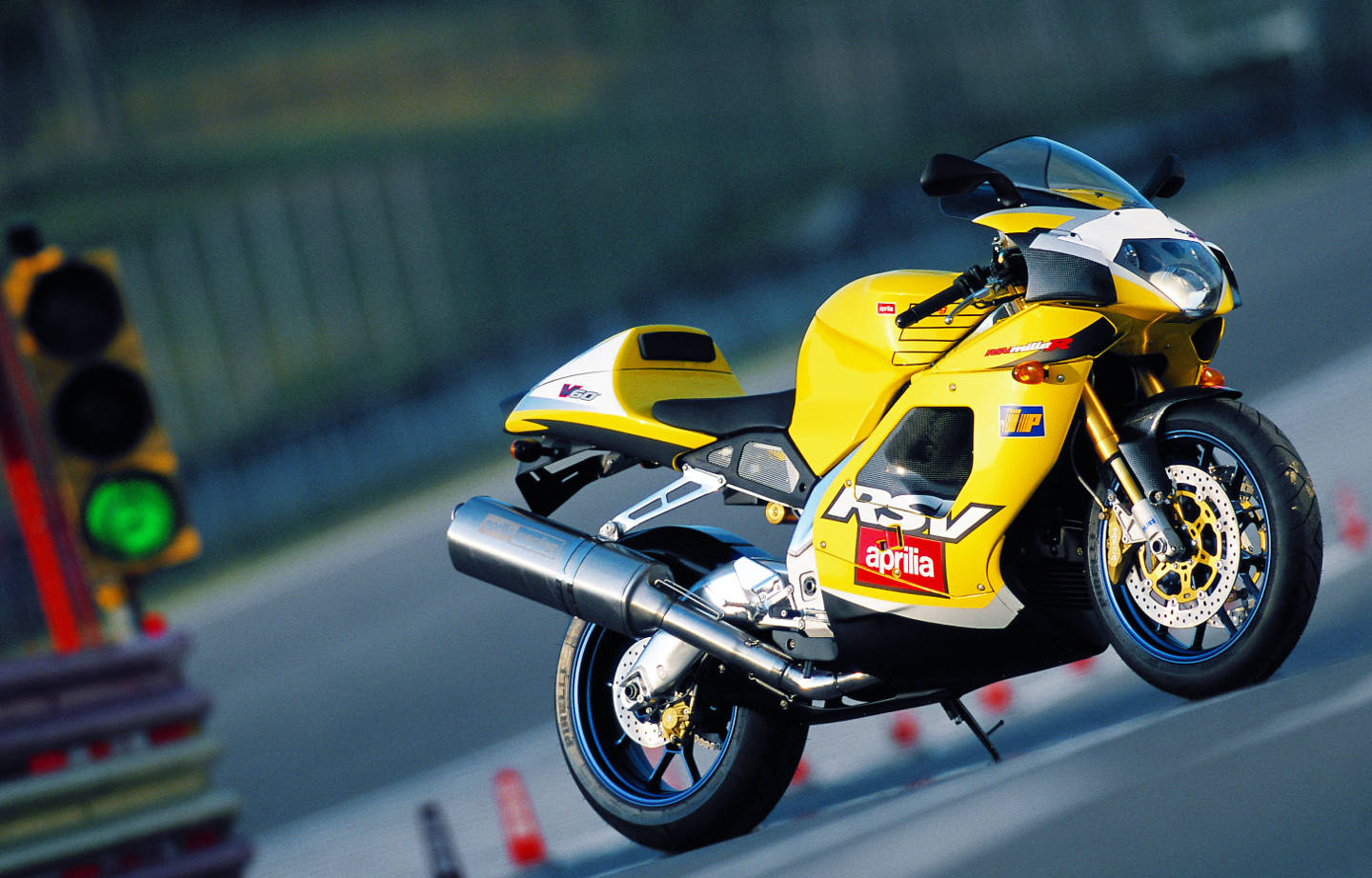
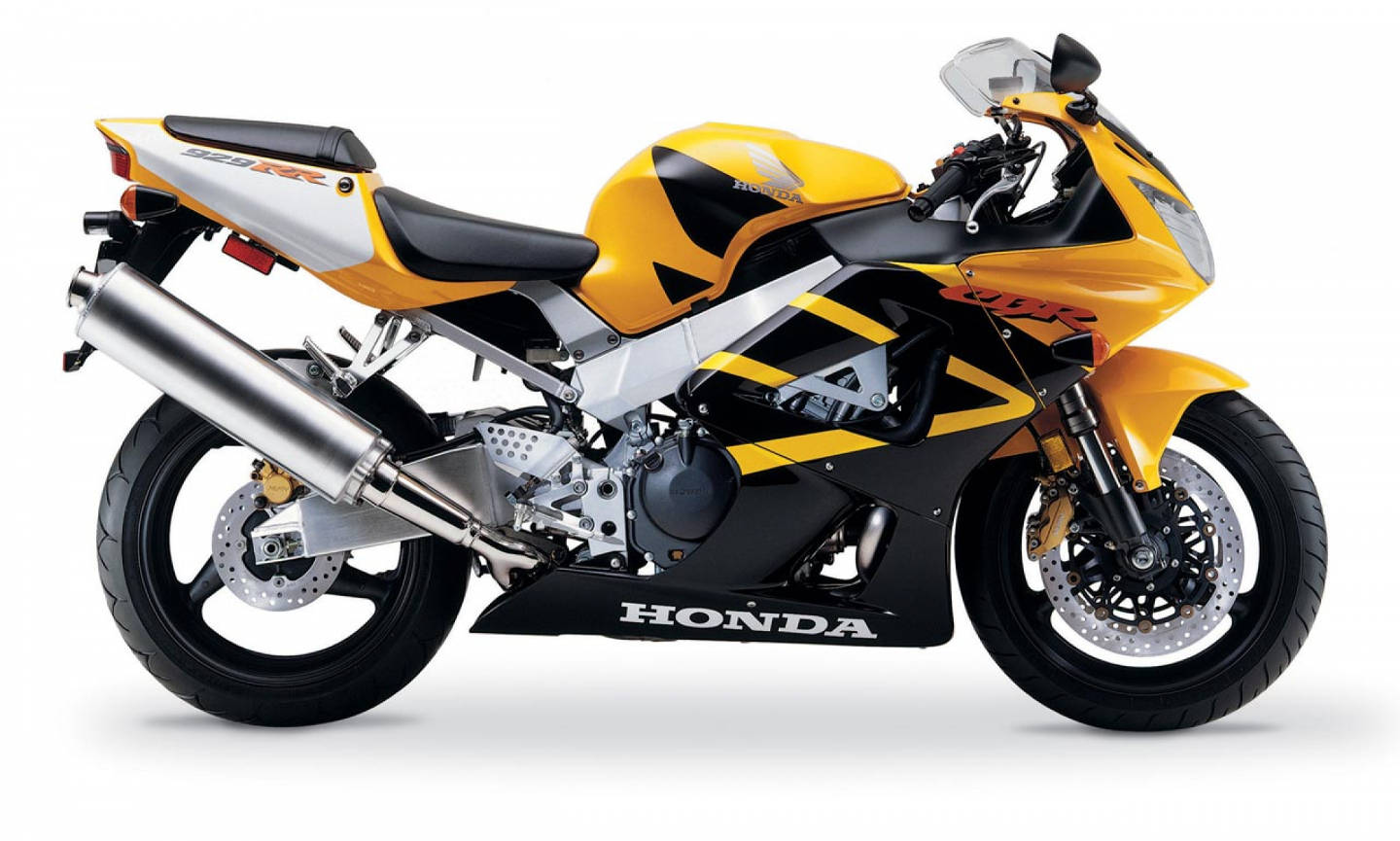
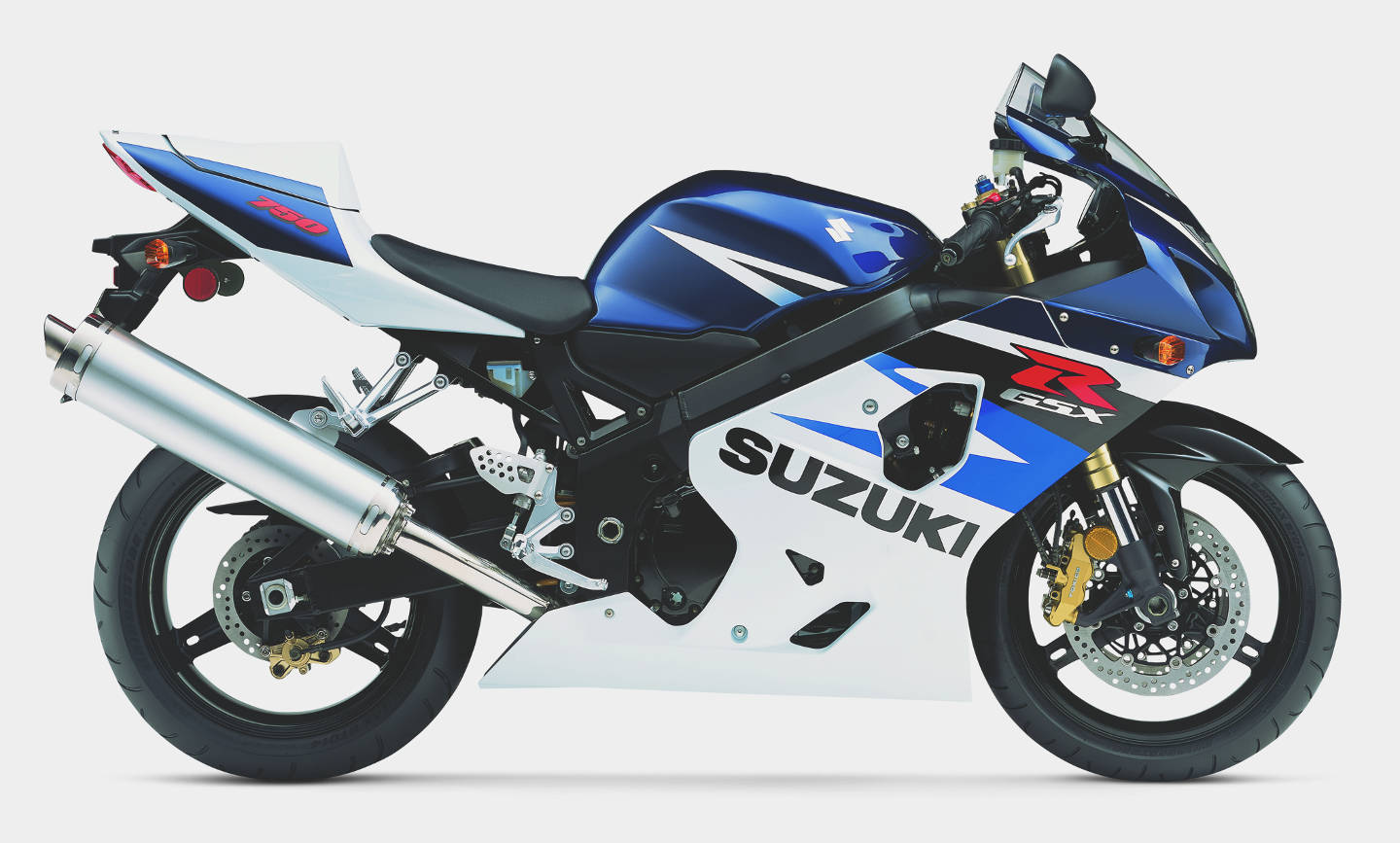
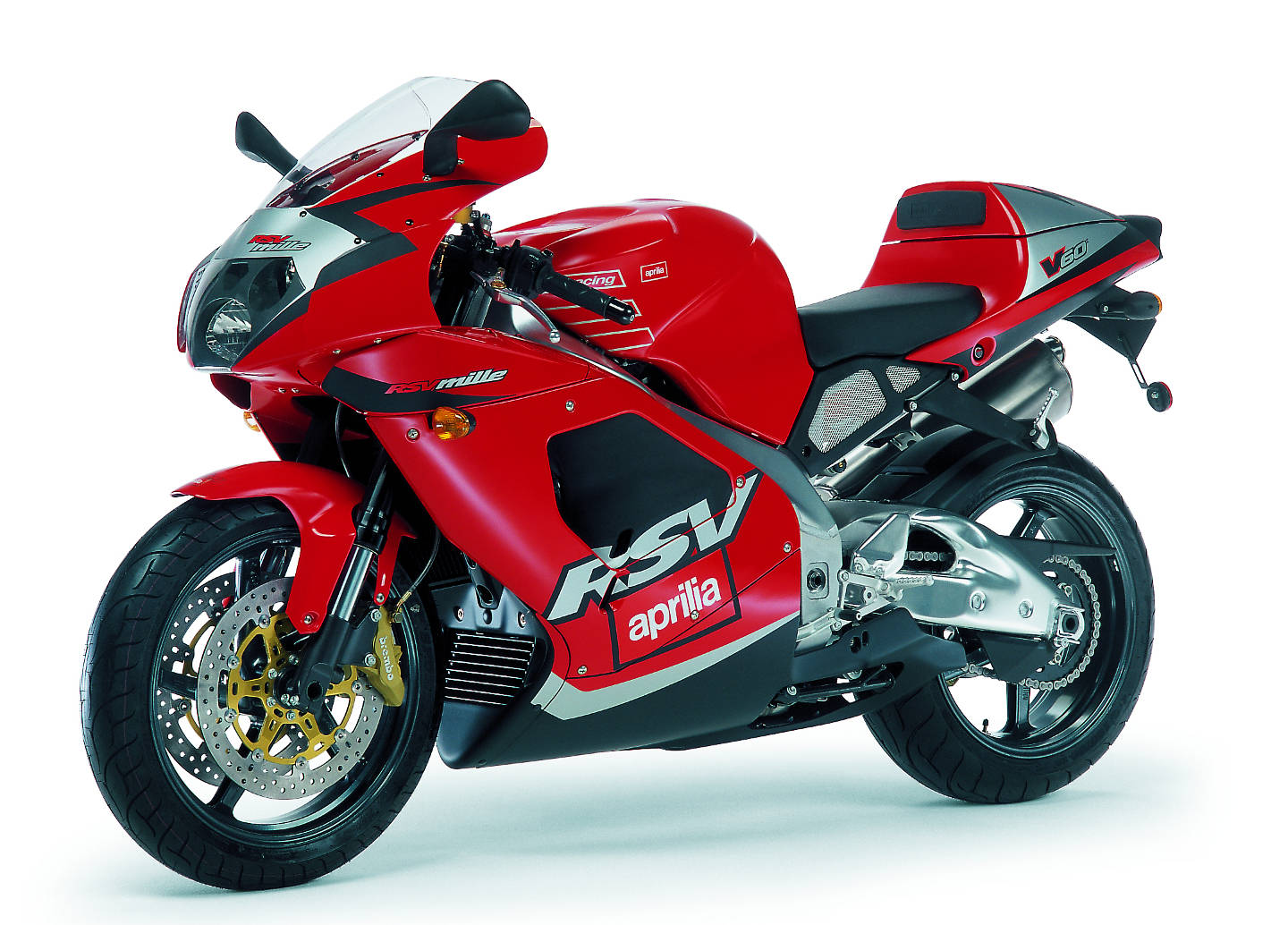
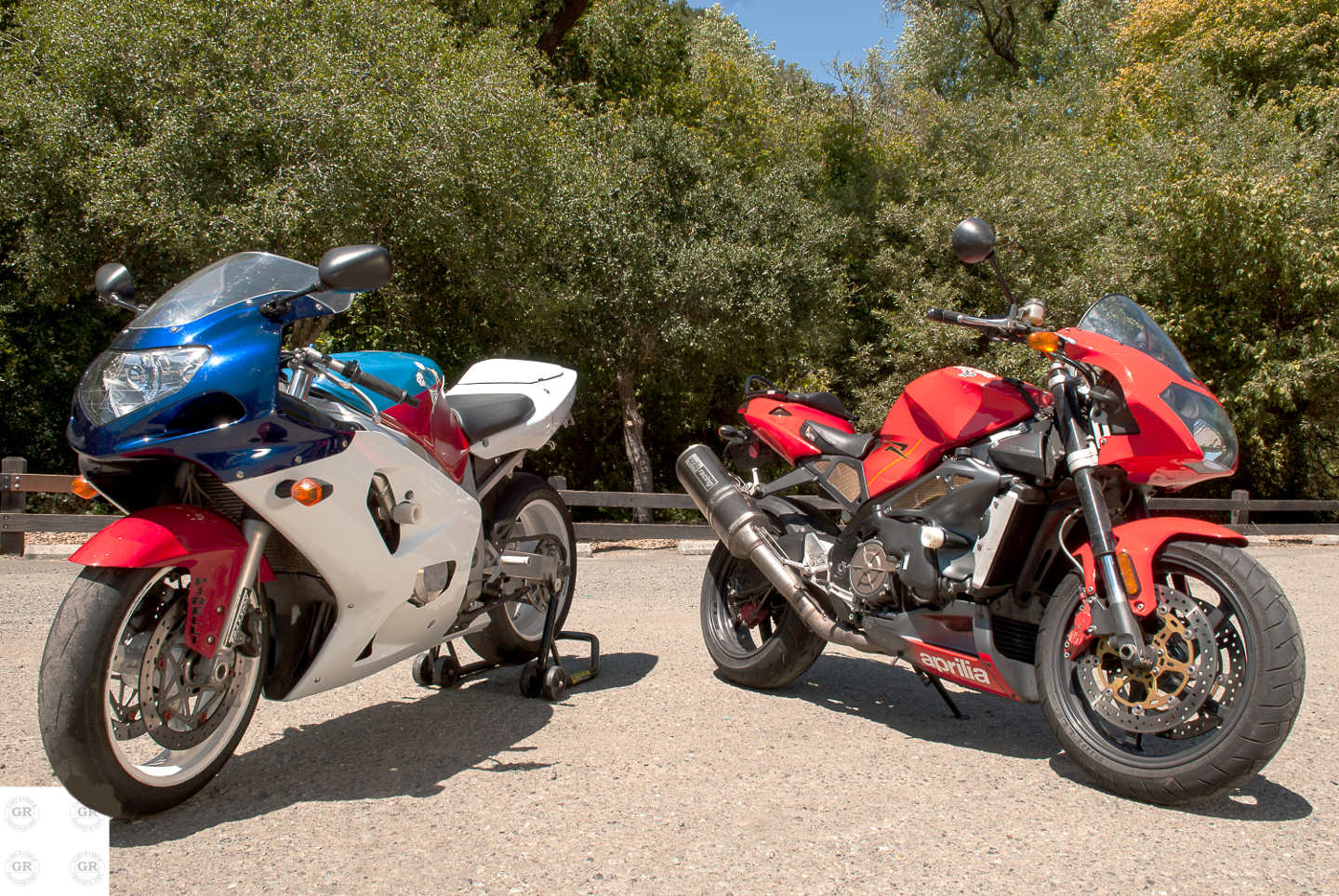

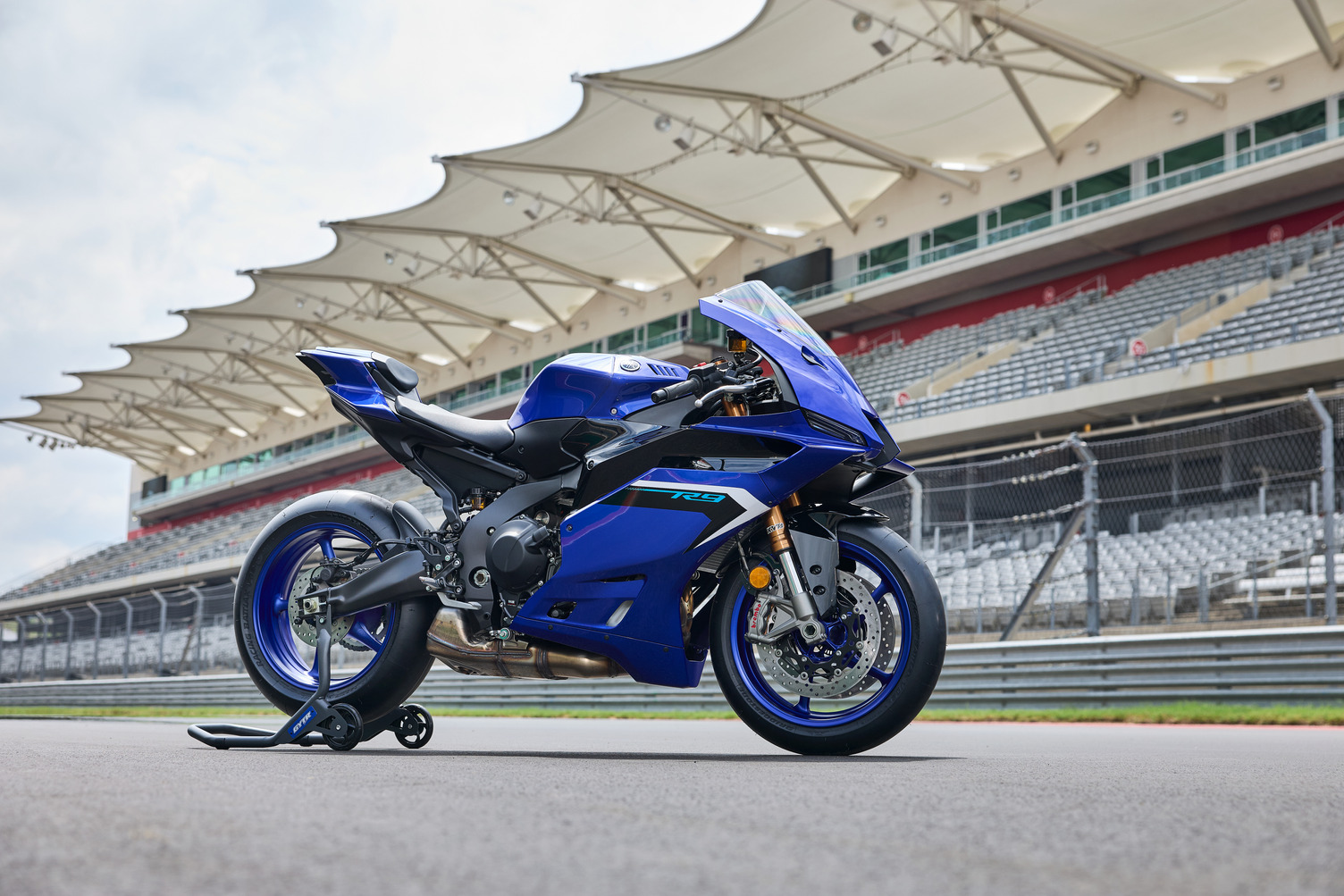
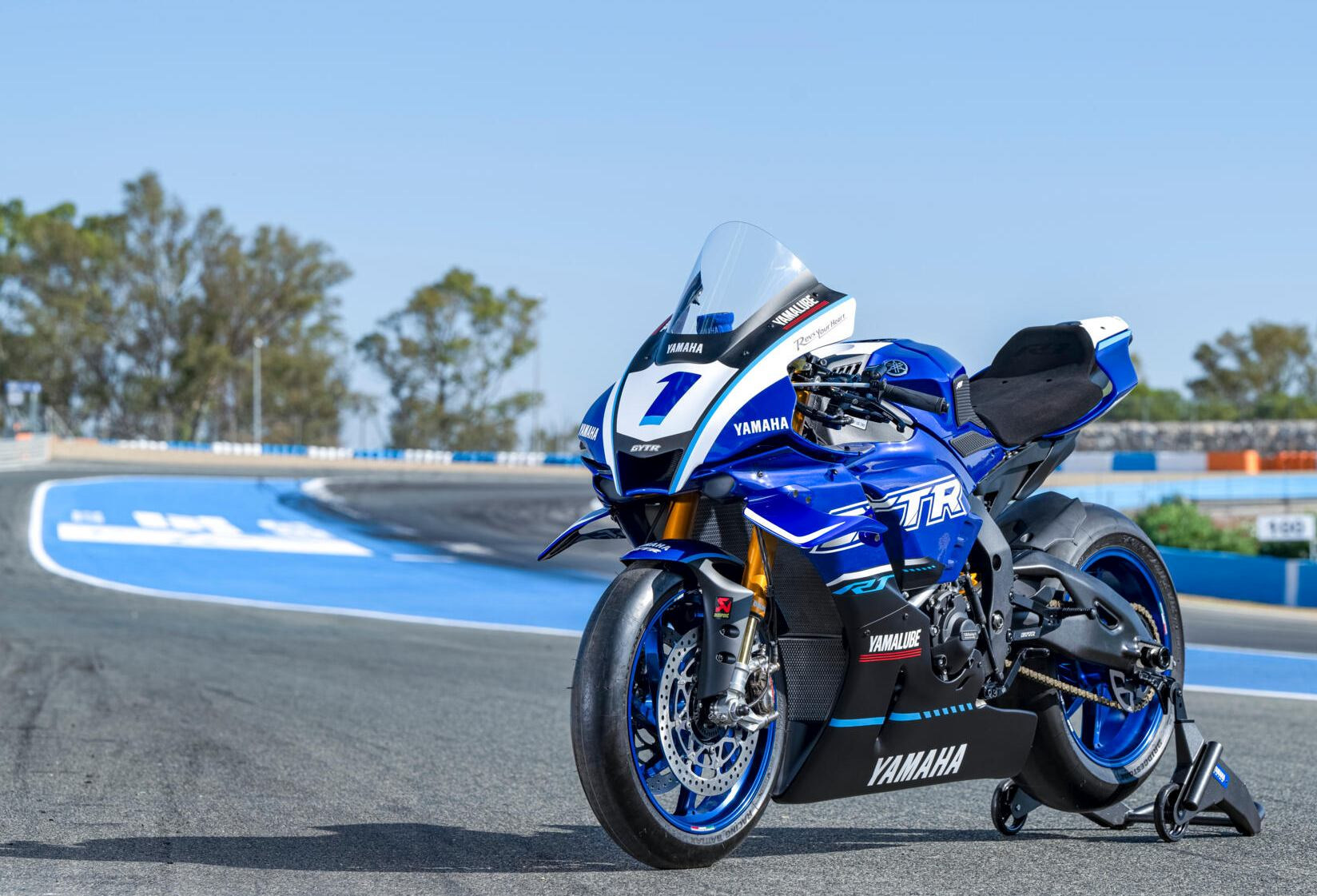
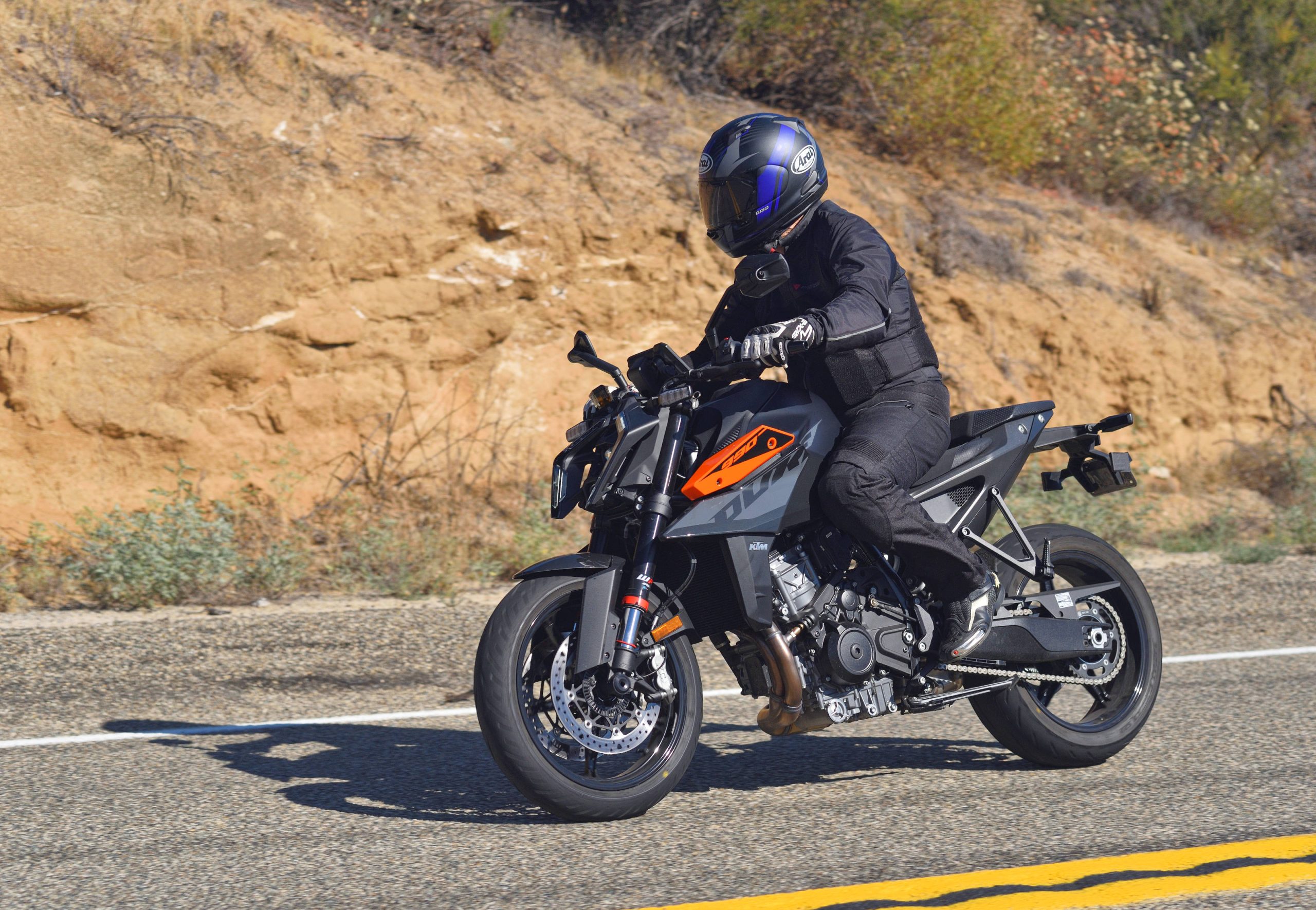
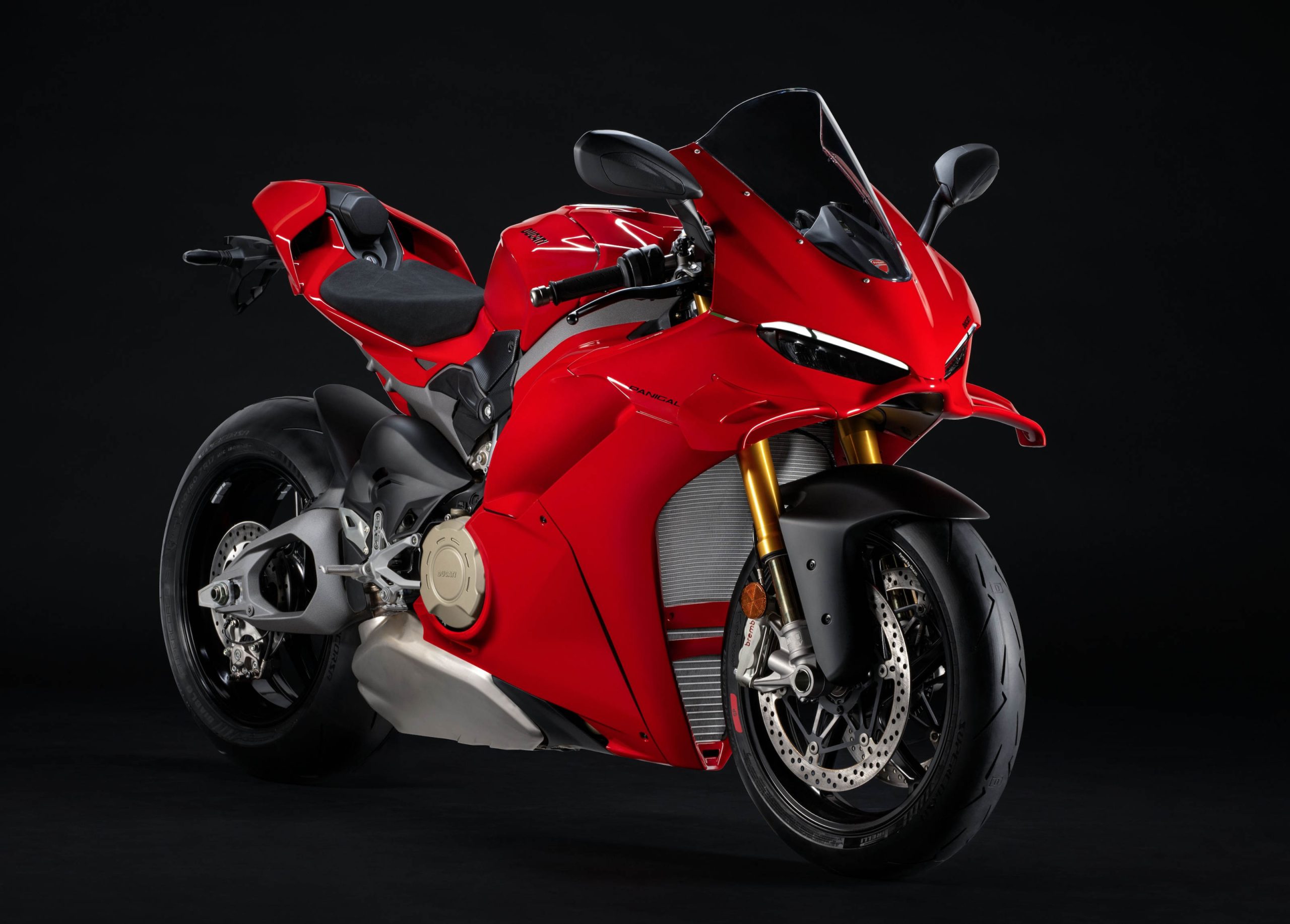
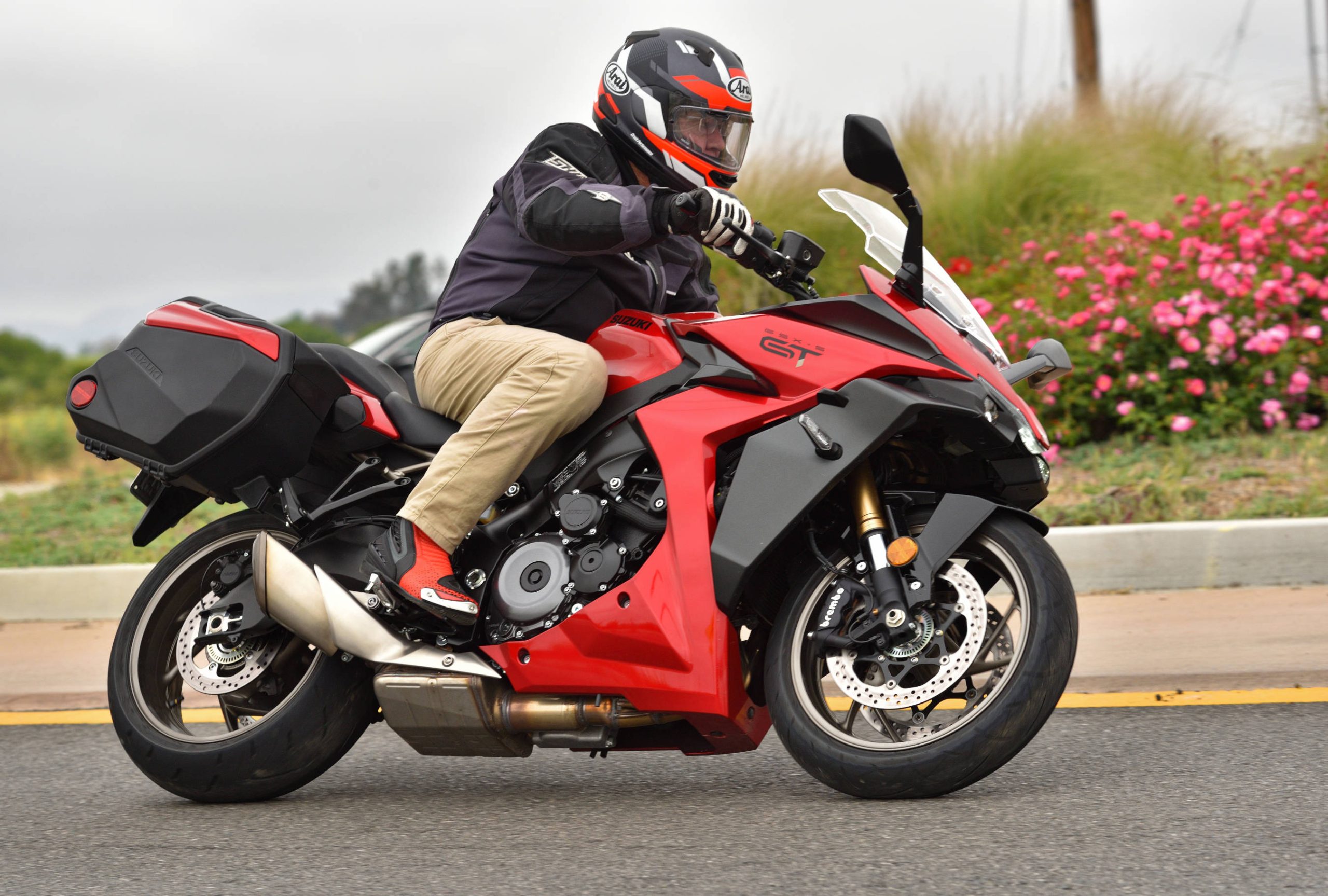
Same old same old.
I’m off to pick up a ’09 Buell 1125R, for about $5,800..
I pay little to no attention to sportbikes these days. I do not fit on these cramped torture racks they turn out now. I do perk right up when somebody mentions buying an early 2000 era (late 90’s even) sportbike, though. There are so many awesome deals on great bikes. Bikes that interest me much more than the latest electronic bullcrap found on the new bikes. I could care less about that stuff.
All this about expensive Mille parts is a false argument. They rarely need anything. I recently did replace the starter solenoid though. A $15.00 Ford truck part did the trick. Those Rotax motors just do not go out of adjustment. And, they are so comfortable that I just added a top box to my MilleR (with an upgraded biposto subframe) for touring and commuting duties. So far, 12 years of almost trouble free riding with my ’01.
Good show, Gabe. 6 of 7 of my most recent bikes have been from that era: ’01 929, ’02 954, ’03 954 (@ 47000 miles),’03 RC51, ’04 RC51(current)and an ’03 999. All street ridden only. These twins needed to be revved like fours.
The SP-2 RC51 makes great cam gear whine, is very stable while leaned near the edge of the rear tire, has great exhaust thumping and heavy steering yet is a porker and requires lots of work (for me) to ride to 95% of my acknowledged mediocre capability on twisty street roads (as found in the hills of NW Arkansas). Not particularly fast compared to the 954 especially in chicanes.
The 929 was prone to tank slappers while the 954 is not. My 100% mechanically stock ’03 954 is used as a touring sportbike. Not uncommon to ride over 3300 miles during 10-12 day trips typically including four 500+ mile days. I’d never make it on the RC or 999 (with helibars).
Early 2000s Japanese appliances work for me. These bikes’ capabilities far exceed mine. Over the course of 75000+ “touring” miles from Tail of the Dragon to multiple trips to Palomar Road, the overwhleming majority of late model electronically aided bikes I’ve come across in curvy sections are so sedately ridden electronic aids are superfluous. As Valentino Rossi so spectacularly dissed Honda center stage in the early 2000s, it’s the rider.
Good read.
The early 2000’s GSXR’s make me cringe though. Poor, poor quality. I have never been to a track day without at least one or two going pop. Also, a 929/954 will clearly make more horsepower and torque than the 750. No surprise there.
We’ve evolved. I’m buying a Honda Grom for each foot.
I occasionally fight the urge to look for a last gen ZX9 A bike this site loved. Kawi had fought off the pure racebike trend but had to give up and go lighter and more powerful with the ZX10 from then on. I think they were right all along.
One more contender! These aren’t as cheap but the Ducati S4R and S4RS are amazingly animalistic nakeds with superbike handling. I had no problems with my 04 S4R except 3rd gear wheelies! Unlike a 2V desmo you’ll probably take it to a shop for valve check, that isn’t cheap.
re: ” Later iterations were less, especially if you wanted to pony up for the R or Factory models.”
2 words… HAGA REP…!!!
The article crashed and burned when the Aprilia was declared best used bike.
Italian bikes on average cost more to maintain and parts are hard to get,
no thanks. My picks for big bikes 1.2000-2005 GSX-R1000 2.CBR954RR 3.98-03 ZX9R
4.02-05 YZF-R1 5. SV1000, hard to find as they sold only a few. All these bikes
are easy to maintain and parts are readily available.
The old adage, opinions are like A-holes, everyone has one and some stink applies here. 6 years of Aprilia ownership…never had an issue with finding parts on the rare occasion I needed something. Tires, brake pads, chains, sprockets, oil filters were 98% of what I needed. All wearable items that need replacement regardless of brands. The myth you perpetuate about Italian bikes is not based on facts in the case of the Aprilia. Enjoy your cookie cutter bikes.
Motorcycles are motorcycles. Some are going to be good, some are going to be bad. Google issues and problems with Aprilia motorcycles and there will be many pages of reading..same as if you googled issues or problems with Harley Davidsons or Hondas for that matter. No manufacturer has dealers without service departments and no brand of motorcycles doesn’t come with a warranty. Just because you have not had issues with Aprilias doesn’t mean no one else has, just like me having no issues with Honda motorcycles doesn’t mean no one else has. Some people claim their Ducatis have been stone reliable. My son bought one new in 09, that has practically lived at the dealer. Luck of the draw. If you haven’t had any problems with your bike, be thankful. I am.
Hang on a minute! Let’s backtrack and look at the beginning of the article and stop drooling over the great bargains out there (I myself just picked up a 2010 1198S as it was the last model with DTC but standard Ohlins and IMO the 1199 is the ugly sister of the 1098/848/1198 supermodel) and look at the opening of the article…
Airplane engine technology stopped improving simply because a new sweeping technological evolution happened wherein a completely new option appeared that blew away the previous technology. Jet engines. There was no contest once turbines surpassed the performance/weight ratio of piston engines, and since then there has been no looking back. But do we really think that with today’s combustion engine technology advances we couldn’t produce an airplane engine that would outperform those from the 1950’s? That is incredibly difficult for me to believe. Innovation is crucial, good, and important until a new platform appears that makes sense.
I agree that there are some bargains, but let’s lay off the hyperbole? And as others have pointed out, there really has been (and will be) advances in mapping, fuel economy, traction control and all of that – and they make things safer for all of us, if we choose to embrace the tech.
Now as for older bikes that are great – I owned an ’01 Aprilia Mille RSVR (Ohlins and higher output) and it was simply a delight on the street and track. I still miss that one. She was one sexy Italian twin.
Not simply because of a new technology – the technology came about because propeller planes were truly tapped out – it’s the propeller that’s the limit – the tips are getting close to the speed of sound, and that’s bad. What’s the point of developing ever more powerful piston engines when you have reach a aerodynamic limit? This limit was known long before it was reached.
The example of turbine engines is valid even if you keep the props on both. Turboprops have a far superior power/weight ratio to piston prop engines. However, piston engines still make more sense for smaller, lower flying airplanes as small turbines aren’t as fuel efficient (yet).
In any case the turboprop has the same speed limit imposed by the propeller, so that wasn’t the object of developing a new technology. Fighters, interceptors, and bombers (at least in the Free World) all went to jet propulsion solely for the increase in speed.
My point was that the limits and goals are not the same across the market, the same as in aviation. There are older bikes that do their job better than any current bike, just the same way as there are airplanes still being made with propellers (turbine and piston) because they do their jobs better than a jet could.
A couple years ago I picked up a 2000 Sprint RS 955i with 19k miles for $2,500. I converted it to euro bars (longer brake line and extend wire bundles) and it’s a reasonably comfy all day bike with decent handling and power.
Forgot to say, I’ve always had a soft spot for the first gen Mille, the brighter the paint scheme the better.
My vote 1) GSXR 04-05 series 2) RC-51 03-up Nicky Haden version ? 3) SV-650 99-02 carb models 4) Kawasaki Ninja 636 05series. Good article
I had an Aprilia RSV Futura and once the rectifier was changed the bike was dead nuts reliable.
Hardly ever needed valve adjustments.
Miss that bike.
Anyway, this was the best article I’ve read on MD for some time. Thanks!
I disagree with the basic premise of the article – that sportbikes haven’t advanced significantly since 2005 and that rider aids like ABS, traction control, and switchable engine maps are un-asked-for features only for those “who don’t know how to ride.” (BTW, what a back-handed slap to those who prefer, for whatever reason, to ride with the latest electronic aids!) In fact, these features are significant technical advances (especially for safety) and generally benefit virtually all riders, no matter what their experience level. I think you can argue that these features, because of their safety angle, are much more important than the incremental advances in engine power and handling the occurred prior in the previous generation of sportbikes. Ask Keith Code what his accident rates are for his Superbike school before and after adapting bikes with ABS, traction control, and switchable engine maps.
There are certainly some great values in this 1998-2005 era of sportbikes if – and this is a VERY big if – you can find clean bikes that haven’t been crashed and/or molested with questionable mods at a reasonable price. But the idea that they’re every bit as good as the latest generation of sportbikes simply doesn’t pass the common sense test.
And new bikes use chemicals in their manufacture that are less toxic. Development and manufacturing processes now cost less for similar or better results. Those are great things too. Do they make me a better rider or the bike more enjoyable?
Nope.
That’s not what I said at all. Quote marks mean I wrote those exact words, and I didn’t. I can’t help it if you mis-interpret what I write and put words in my mouth.
Gabe, your exact words were “Traction control? Anti-lock brakes? Switchable engine mapping? Who decided we needed those features, anyway? Back in the day, to avoid high-sides, low-sides and skidding, you had to actually know how to ride.”
I paraphrased this to “ABS, traction control, and switchable engine maps are un-asked-for features only for those who don’t know how to ride.”
I apologize if I used quotes incorrectly, but I think I was interpreting what you were saying very accurately.
Great review. My vote goes to the VTR1000F Superhawk/Firestorm (’98-’05). I sold a ’89 Hawk 650GT for a brand new ’98 model when it made sport bike of the year for 1997. I rode it for 10 years and 26,000 miles with at least 10 track days on it. I would still be riding it if weren’t for a badly behaved deer that totaled it. 105hp to the rear wheel, 69ft/lbs torque, V-twin sound and power band, Honda reliability, etc in a cheap and good looking package. Downsides- 41mm showa forks need stiffer springs and valving, jet kit, exhaust, and better tires. That’s about it. I could keep up with my buddy on a Ninja 900 back in the day with “GP” compound dunlops. Little known upgrade- 2001 GSXR1000 calipers bolt right on for a cheap six-pot upgrade.
I have been pouring over Craig’s List pages for two years (Long Island) and haven’t seen a decent SV-650 yet. They seem to be rarer than naked Goldwings from the 80’s. Seems to me, people buy these great all-around bikes and then they ‘just keep em’. What is up with that?
Because they are keepers! I look for them myself in the Houston area all the time. The ones that show up for sale have usually been abused. Every now and then I come across a clean one. It lasts all of five minutes before someone scoops it up. Should have never sold that bike.
word on the SV’s. but try a Versys out. I loved my SV but wouldn’t give it up for the V now…
does this jeremy know the Buell guy now on a triump on I 10?
I-10 is a pretty long stretch of road through TX! I can’t say I know whom to which are referring. That said, I once lent a hand to a guy named Jack G. that used to commute I-10 west-side (Houston) on an XB12SS. (Can’t be too many people commuting on Buells, right?) We never kept in touch though, so I don’t know what he rides these days.
Make mine a 954 please, and as close to stock as possible.
Sadly, it’s the second part that will be tricky. There’s certainly no shortage of late 90’s to early 00’s sport bikes here in Florida. But none of them are stock. They all have some combination of the following:
Crash damage
Repainted (to hide crash damage)
Color-tinted windscreens
Color-anodized bar ends, frame sliders, brake fluid reservoirs, etc.
Polished rims, frames, swingarms, etc.
Extended swingarms
Lowering links
And the owners set the price high believing these “improvements” have increased the bike’s value.
I’ve passed plenty of these kinds of bikes in the Oakland hills while riding my ’82 Seca 650. I doubt I’ve come anywhere close to surpassing the potential of that bike, let alone one from the ’90s. Until that happens, I am plenty happy buying cheap bikes (or digging free ones out of the ivy) and honing my skills.
I traded an old $250 BMW for a ’93 Ducati Monster and I’m actually slower on that than I can be on the old Seca. So much for all the fancy bits and bikes; I think I’ll spend my time and money improving my skills instead.
Skills, exactly. When I lived in the Bay Area, I passed plenty of faster bikes on my Ninja 250….
You must have known JoMo! God speed, Joe!
If the 929 was overshadowed by the RC51, I would have expected to see it on this list.
Couple of years ago I bought a 2000 VFR. Redid the suspension, added new tires, full tune up, and a paint job all for under $4000….. and that luscious V4 sound!
You’re right! Your anecdote trumps all the anecdotes I heard.
Oops! Posted int he wrong place.
“Bay Area riders actually ride” Actually Bay Area riders are like all other riders, some ride and some just put in 250 miles a year. I know plenty in both categories.
Hang on a minute… I object to the censure of reliability with the Aprilia. I rode my 2002 RSVR (yellow!) to Laguna Seca from the Seattle area three times – once with two Hondas, a 600 and a Blackbird. It was 110 degrees of hot. I thought my tires would melt. Both Hondas broke. My Aprilia was just fine. I just turned over 40K miles. My neck is fine, thank you. The bike has always been reliable and awesome.
You’re right! Your anecdote trumps all the anecdotes I heard.
It’s an Italian bike. You aren’t fooling anyone!
Its an Aprilia. All the Italian passion… but very well engineered.
I’ve owned 5 different ones….all were spectacular. 50,000 miles between them in the last 6 years. No one is trying to fool you….simply to get you to quit being foolish and try one.
Look at the voting…these are rare bikes and they won the contest. Make no mistakes, these are fantastic bikes. You’ll either get it or you won’t after a single ride. Best of luck to you all.
The comment was sincerely meant in jest. That said, it has been my experience that passionate owners of rare bikes “forgive and forget” a lot of quality problems that would have Honda owners storming the castle with torches and pitchforks. Having owned a KTM, a Buell, a Ducati and yes, an Aprilia, I know this well.
To be fair, the 07 Tuono only required a few “pre-fixes” to qualify as a very reliable bike. It is also the only bike I never intend to sell.
“the 07 Tuono only required a few “pre-fixes” to qualify as a very reliable bike. It is also the only bike I never intend to sell.”
Nuff said. LOL.
I’m pretty sure even Soichiro was chuckling at that one.
GREAT article…..well written , interesting and very usable in todays economic climate as well.
Everyone, myself included, loves NEW. Stuff is almost always pretty great when it is new. BUT there are machines that stand the test of time and others that dont. Its interesting that many of the bikes that WON the comparison tests were NOT necessarily the best choice for MOST folks in the long run.
FIRST in my book has become RELIABILITY. It used to be looks , performance etc. on down . After riding 35 years and almost every type of machine , I DONT want to fix , I want to RIDE.
Second in my book comes MONEY. I say this because its cost of purchase , cost of parts , cost of repair , cost of insurance etc. No matter what, ALL of us are bound in one way or another by cost when it comes to our bikes (yes even you billionaires). Its not fun to be pouring a ton of cash into your machine after getting it when you didnt expect to .
I have for several years become of the mind my father once was…..it is MUCH smarter to buy USED. If you wait at least 2 to 3 years you can get machinery for FAR less. The exception is must have new tech . Sometimes the new model has something that you have deemed you MUST have that was just not available previously (like say, the dual clutch auto manual on the newest VFR1200) . In that case you dont have much choice and are willing to pay the premium for new. KEEP your machine a while , dont be trading up every year , get your fun and moneys worth out of it. Its great to aspire to something better newer….but learn to appreciate what you have and make the MOST of it.
LEARN to really DRIVE/RIDE. 80% is the rider / driver’s ability NOT the machine. MANY times in my life I have experienced great drivers in sub par machines decimate great machines with sub par drivers. This is especially true on motorcycles…they require alot of skill and judgment to ride quickly and safely.
Last but not least have FUN and be SAFE. This sport is about enjoyment and we all want to go home that night so dont be an idiot. 😉
Excellent comments. Exactly…technology can only take you so far. Nothing gives me more pleasure than to leave guys on new bikes in the dust on my decade plus old equipment when things get twisty. Learning to maintain your own equipment too is another aspect of living with an older brand. I do my own tire, brake, chain/sprocket, minor electrical issues and oil changes.
I’ll have to throw in the Z 1000. The 03 that I owned was awesome! I got it for a trade of an 03 R6 and $1300 for TT&L brand new (purchase and trade in 10/04). That Z had so much power and grunt in 5th and 6th on the highway making highway passes and getting out of a cagers way with no need of downshifts.
The only downside was the front end which did get a little sketchy when dropping the hammer in the twisty’s, but was fixed by a front end swap off an 05 ZX6RR (friend at a local shop pulled the front off a bike that was totaled by the insurance company, sub-frame and swingarm were shot in the wreck but the front was solid).
Such a beautiful bike that it was stolen from me in ’08…
the turn of the century was the last time Honda came out swinging. both the 929 and RC51 was given to us for M.Y. ’00.
1+
+1
You should also factor in maintenance costs and the very real possibility that the dealer that you purchased your marvel of electrical complexity from will be the only place you can have your new bike serviced.
The Tuono is hooning good fun. Fast, nuts and sorry officer, silly. You should buy one.
I always liked the ZX-7R or the ZX-9R.
The only tech that has come out in the last decade that I personally value is shaft drive. Yes it’s been around forever but only in the last decade have they worked out the geometry and weight to make it a sweet system (FJR, VFR, Concours14, etc). Not very related to the article or track days but the only relevant tech warrants bigger bucks.
You guys really into PORN QUEENS? Lol
Gabe we haven’t heard back yet about your SV650 project, and already you’re on the hunt for another bike! Tsk tsk!
I’m well on my way to an intervention. I’ve got a Buell 1125CR,96 S1,09 Ulysses,92 900SS &96 900 Monster,03 RC51,07 SV1000. Not paid more than 5k for any but the S1 and Uly(bought new). Still thinking about a Speed Triple or V11 Sport Guzzi. It’s a sickness, but who can pass up these cheap twins?
That’s right, keep buying the new bikes, guys….so I can have my fill of old but little ridden performance bikes @ 1/3 the cost of new!
I bought a 2005 SV1000S for $2900. With $50 zx10 shock I have character, tractable power and more low end grunt than cbr1000rr’s made today… There isnt a better bike for the dollar.
I had a 03 SV 1K and a 05 CBR 1K. The only place the SV really has more low end is below 4K rpm. The CBR out torques it and out HPs every where after that. But you ride the CBR at 1K RPM higher anyhow so it just stomps it.
If you want low RPM TQ…ride a VTR SuperHawk..:) Surprised THAT didn’t make the list.
DT
Right on Ducan….
I also think you are correct about the VTR Superhawk….Superb bike and you can get them in excellent condition for under $3K now, hard to beat.
I have to disagree…not that the VTR wasn’t a great bike, but that it was particularly torquey on the bottom. It had decent bottom end, but I rode one regularly back to back with my SV1000 and it wan’t impressive, bottom end nor otherwise. I haven’t ever ridden a CBR1000 but they are reputed to be extremely strong off the bottom. If you want a strong bottom end, think Speed Triple, ZRX1200, Hayabusa…those bikes make power from the second you let the clutch out at idle, LOL!
My vote for best kept secret is the Gen 1 FZ-1. They can be had cheap. Half of your $5000 budget. Handle great, awesome brakes, sporty yet comfortable riding position, adjustable suspension, 26,000 mile valve adj intervals, 125 horsepower., Good looking, proven dependability ( FZ-1girl has over 200,000 miles on hers) .Great motorcycles. I had one, sold it, regretted it, bought another, sold it, miss it badly, may buy another. Awesome solo sport tourers with soft luggage too.
I almost bought one back in 2002 but the insurance man said no. They must have seen Yamaha’s “R1 for the Real World” ads because every company I called priced the FZ-1 the same as a R1. I ended up with a BMW R1150R instead.
Agreed…AWESOME street bike! Left them out of my couple of named bikes above that make incredible bottom end, which makes an awesome street bike. First gen FZ-1’s and 1998-2003 R1’s made incredible bottom end…..miss that type of powerband. I’ve had a 2005 and 2008 ZX-10 and I can say, NEVER assume how a bike will feel by it’s top gear roll on numbers in a magazine….
Just wondering, what if you get down price a bit?
Which midrange (40-70 hp) can you get?
Would you satisfy the average Joe of Motorcycledaily that hunt and begs for a motorcycle with sense (no beak, ridiculous price, not manageable, low manteinance, great handling)? or has it never been build something like that?
(just wondering because the I’m in love with the 954)
SV650….hands down. 2000-3500 bucks and well known aftermarket bits to make it handle even better.
Ninja 500
Suzuki GS500E
Bandit 600
Ugh, ugh and ugh!
Those are more like late-80s bikes regardless of what year they rolled off the production line. I’ll have none of it!
Bikes of the 80’s post of the next week.
I’ll post my entry with the 59 bhp bandit 400 😛
haha!
Well, as the owner of multiple Aprilias over the years…I’m both delighted and confounded by your article. They certainly all been a pleasure to own and ride (Tuono, MIlle R, Futura, SXV550 and Caponord). I still have the Mille R and the Tuono…those aren’t going anywhere.
I’ve felt like I pretty much enjoyed one of the best kept secrets in under valued motorcycling until this article ruined it. LOL.
Personally, I’ve had great reliability out of my examples. I’ve replaced clutch seals after 10 years because the bike had sat all winter. Then starter relays because I let the bike sit off the battery tender too long….but that is pretty much it. There has since been an update on the oil seal and a Yamaha equivalent starter relay is approx $50 bucks. AF1racing.com is a fantastic resource for the Aprilia brand in the states.
Your BARF area riders have it right. The Aprilia won by an incredible margin likely because they are smart, knowledgeable consumers who recognize something great when they experience it.
Adding another 1st gen Tuono to the stable by the time the snow flies.
I honestly don’t know why anyone would be tempted to buy any sport bike of that era … or even later. To me they are strictly poser machines, the squid’s answer to the chopper. They require you to assume the classic monkey-humping-a-football position. A position, as it happens, that is only appropriate for a racetrack. So squids buy them, they stunt them, they wreck them. Their lower backs are ruined from the unnatural kink and their bank accounts are depleted by, first, speed equipment and then, replacement body panels. All so that they may assume the position and play boy racer. Look at me! I’m just like Valentino! No thanks. I am delighted by the new generation of sensible bikes … some of which are being fitted with performance engines (Multistrada, anyone?).
Question: ‘I honestly don’t know why anyone would be tempted to buy any sport bike of that era … or even later.’
Answer: ‘A position, as it happens, that is only appropriate for a racetrack.’
GSX-R’s makes especially good track bikes because so many parts are available, I believe because Suzuki had strong contingency programs at the time. You can bomb Bike Night during the week and strafe track days on weekends. Some people find it fun.
There are a whole bunch of us who enjoy those bikes responsibly at track days and amateur racing events. Not to mention several folks who use them as sport-touring mounts and find them just fine for comfort. In fact, the riding position can be even MORE appropriate and comfy than upright bikes when they are used as intended. Just sign up for one beginner track day somewhere, you might learn a thing or two and have more fun than you’ve ever had on a bike.
I agree and disagree Peter.
The position is uncomfortable on highways but I use my 2004 CBR1000RR for mostly only track days.
Riding a sportbike on the twisties alters the riding position enough that you don’t get the stationary position cramps and painful wrist like on a highway.
2nd, I DO NOT recommend sportbike riders do ANY track days. Once you ride a sportbike on a race track, it totally loses it fun factor on the public roads. Riding a race bike at up to 162 mph (my fastest speed recorded) is such a thrill that riding that same bike at 35mph on a traffic laden public road is just stupid (for me anyways). I don’t do track days anymore but I think about all the ones I have done in the past ALL THE TIME, they are very addicting!
Purchase a racer riding course to maximize your skill and fun factor.
I purchased a Harley for public road riding and use the CBR for track days. I fully recommend a 2k4 CBR1000rr. I have had 0 problems and it is stupid fast.
Some of us buy such a bike and then put an LSL conversion kit on it. I can assure you that I don’t buy a bike to pose on it. But I sure do enjoy the power. My sensible bike is a modified Z750S.
“To me they are strictly poser machines….”
While to others they are lightweight, extremely well handling not at all uncomfortable bikes that excel at virtually anything a motorcycle is designed to do dynamically.
“..A position, as it happens, that is only appropriate for a racetrack…”
Nonsense. Leaning forward, supporting your upper body weight with your posterior chain and most of your weight with your legs, is less likely to mess up your lower back than sitting bolt upright on anything with less suspension travel than a dirt bike; or at least an adventure bike. Or the weight of a full on tourer. You have to work up to it, though, as the required leg and posterior chain strength does not develop overnight. But once there, the forward lean makes you much more stable under acceleration, even on the road. And gripping the tank with your legs, prevents you from inadvertent steering inputs caused by bumps, crosswinds and the like, making the bike more stable. The extreme forward lean, and extremely high pegs, on full on race bikes may be a bit excessive, but older sport bikes were not that bad. I cannot imagine anyone test riding a 954 back then, not feeling it was a much better all around streetbike than the then hyped, 100lbs heavier, VFR. I know I was sold after one ride. And not because I wanted to look lie Valentino, but rather because it was a lighter, tighter, quicker bike that could do anything the VFR could, just better and with less effort. Except two-up, or Iron Butt rallies, I suppose.
Yeah, buying used is a real world consideration. I myself read the MD article, “Stop Me Before I Buy a Used Buell” – now my teeth bang together at idle sitting at lights. Love it. With a good set of sticky tires and the suspension set up correctly, you won’t out-ride any of the sportbikes mentioned – or, you could buy new at 3 or 4 times KBB and still get whooped by a nice clean Craigslist find in your own backyard.
Hoo Doggie!
“I myself read the MD article, “Stop Me Before I Buy a Used Buell” – now my teeth bang together at idle sitting at lights.”
You made my day, Joe!
Ha Ha – great stuff Gabe! It’s my third Buell (XB9R, XB12R, now the XB9 CityX). I musta been dropped as a baby. Riding the Buell never gets old. People stare at the shaking hulk – until we get to the twisties then it’s bye bye to them! It makes my friends GSXR and Aprilia Factory Twin feel like they are stuck in cold syrup during turn-in. What a great secret the Buell is. I hope people keep bashing it. 🙂
Though I have never ridden one, the tests of the original 2004 ZX-10R have been imprinted in my mind. The engine was said to be fierce and scary. For some reason, that sounds great to me…
The 2004 zx10r truly is a beast. I’ve owned one since new and every time I ride it and crack that throttle…it still gives me shivers. Definitely not the most stable though. I’ve had a decent amount of tank slapper scares with this one. My fave of all time was my 2000 rc51 though. Fast, stable and it had a beautiful sound. It’s the only bike I have ever regretted selling.
The last generation ZX-7R’s yes they were heavy but very comfy relatively fast and the best looking sportbike to come out of Japan imho
Best looking ram air intake ever incepted on any machine. Looked like they intended to suck the air right outa your lungs.
Right on. When I’m on craigslist scolling through used bikes these are exactly the bikes I’m looking for. IMHO that was the pinnacle of the sport bike era, they were the best looking, light, powerful, and YOU controlled them. No drive by wire, no traction control, no ABS. Just you and the mechanisms, that was when I started riding and it was a great time for sport bikes.
Great bikes all of them, but it is hard to resist the sex-appeal of the Aprilia. That nice torquey engine makes for a good street bike as well. Don’t know how the 929 compares in that regard, but the Suzuki is a little on the wheezy side down low, IMHO.
Give me an RC51 any day. Gear-driven cams for the win!
My personal fave as well. Not the best in many ways, but full of great character, sounds, and boy did she start to feel good over 75mph. 🙂
RC51 X2 I have had three and I still still have one sitting next to my 08 CBR1000RR I ride it almost every day for what the numbers show in weight and only 120 hp on a twisty road it gives up very little if any to my CBR
incredible build quality and HRC jewel to boot
I can’t recall what year the particular design debuted, but the GSX-R 750 K7 remains the best bike I’ve ever owned. It was the model with that ultra stubby exhaust. I think it was a sort of “golden-era” for exhausts and bike weight, since many of the models that followed had to comply with stricter emission regs, leading to fat-ass end-cans again. Still the best looking Gixxer, in my opinion.
Replaced it with a Speed Triple 3 years later, and while I can’t complain much about the Triumph, selling the Gixxer remains the biggest regret in my motorcycling life. I know there were some complaints about it at the time, but for me, it was faultless. All I did was replace the wheels (I’m averse to 3-spokers, always have been) and brake pads (more for feel than power). No power-mods whatsoever. Didn’t need em for the road. It really was that good.